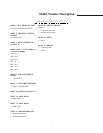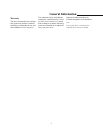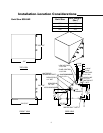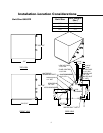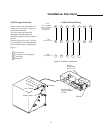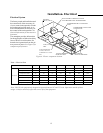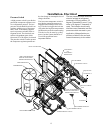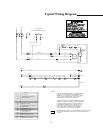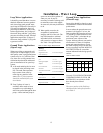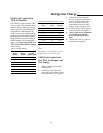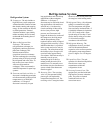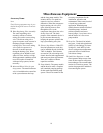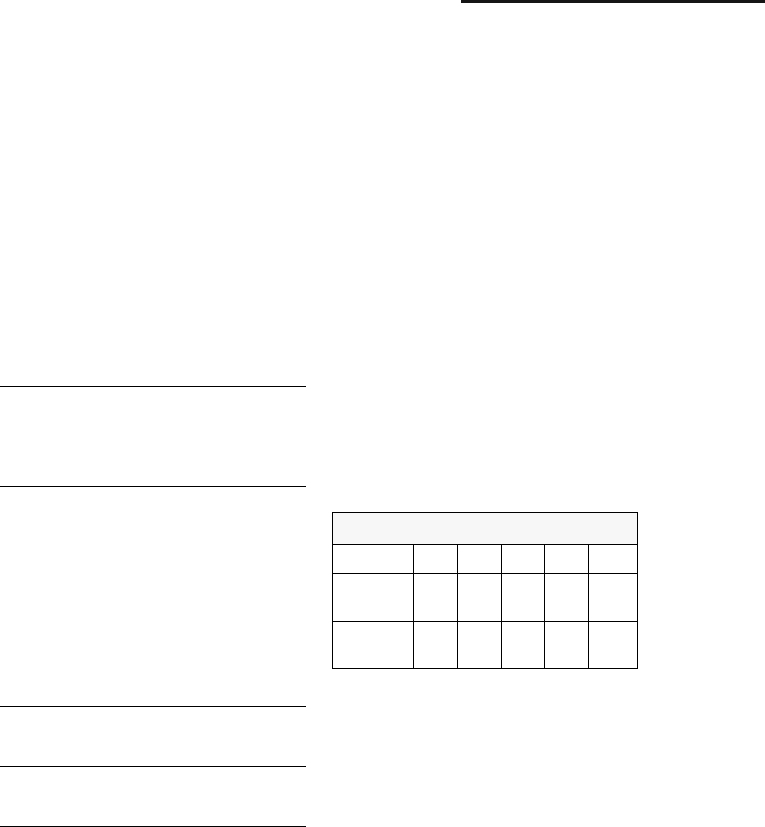
15
Loop Water Applications
It should be noted that there is no me-
chanical difference between geother-
mal (closed loop) and ground water
(open loop) GSSD units. Generally in
a closed loop application, there is a
percentage of antifreeze in the water.
In these applications, the 20 degree F
freezestat, along with the 7 psig safety
pressure switch may be used. All other
applications require the 35 degree F
freezestat, along with the 35 psig safe-
ty pressure switch.
Ground Water Applications
(Open Loop)
Where an existing or proposed well
can provide an ample supply of suit-
able quality water, open ground water
systems may be very efficient. How-
ever, there are several potential con-
siderations that should be addressed
prior to installation of an open loop
system:
! A 60 mesh straining device must
be placed in the incoming water
line. The sand filter/separator
helps ensure clean water by
removing any particles in the
water. Note: A filter/separator
should be available from your
local dealer.
! Even if plenty of water is
available, there needs to be an
acceptable way to discharge it
after it has passed through the heat
pump. A three-ton heat pump is
apt to use one million gallons of
water per year. It may be
necessary to install a recharge well
to return the water to the aquifer.
In some soils, this may be difficult
to do.
! Water quality must also be
acceptable to maintain the
integrity and life of the unit. The
loop fluid must have minimal
suspended solids, and must be
non-corrosive to copper or brass.
See Table 2 for specifications.
Ground Water Applications
(Closed Loop)
Loop sizing should be done by a qual-
ified installer to insure maximized unit
performance.
In areas where the ground water tem-
perature is 66 degrees F or less, the
earth coupling fluid requires at least a
15 percent by volume antifreeze solu-
tion. Using Table 3, calculate the ap-
proximate water volume of the
system. Add one gallon to your total as
an allowance for water in each heat
pump and connection hoses. Check
the earth coupling design for the anti-
freeze percentage required. MORE IS
NOT BETTER-Do no exceed the
amount indicated in the design specifi-
cations.
Use only FULL STRENGTH INHIB-
ITED PROPYLENE GLYCOL OR
METHANOL, not solutions which
have already been diluted.
Note:
The water quality of the fluid loop
should meet the same specifications
as in Table 2.
Table 2: Water Supply Requirements
Scaling
Calcium and
magnesium salts
(total hardness)
Less than 350 ppm
Corrosion
pH 7.5-9.5
Hydrogen Sulfide Less than 1 ppm
Sulfates Less than 25 ppm
Carbon dioxide Less than 75 ppm
Chloride Less than 125 ppm
Total dissolved solids
(TDS)
Less than 1000 ppm
Biological Growth
Iron bacteria Low
Erosion
Suspended Solids Low
Table 3: Water Volume
Volume in Gallons/100 Ft.
Pipe Size 3/4” 1”
1 1/4” 1 1/2”
2”
Vo lu m e
SDR-11
3.02 4.73 7.52 9.85 15.4
Vo lu m e
SCH 40
2.77 4.49 7.77 10.6 17.4
Installation - Water Loop



